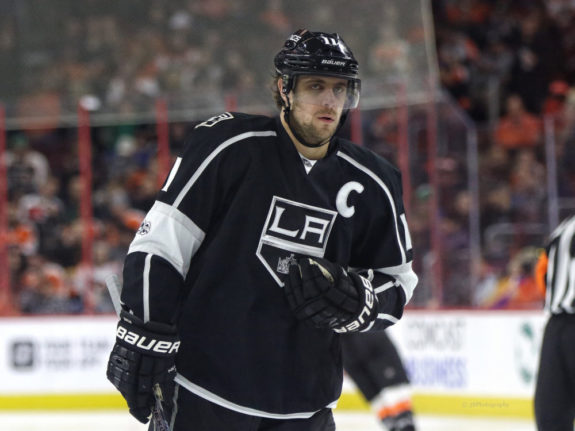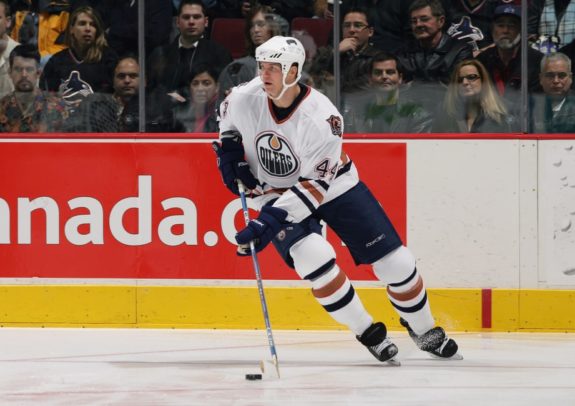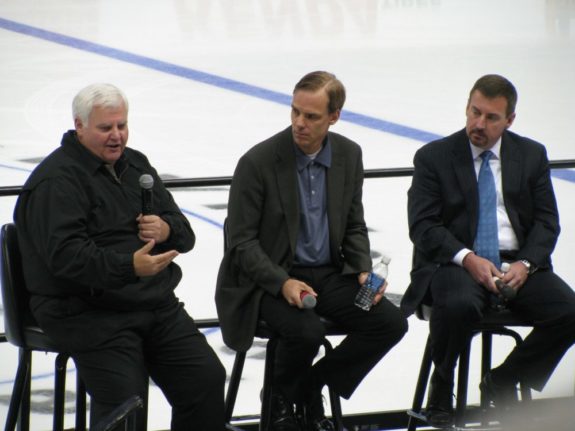
 Cameron Thompson
The Hockey Writers
Cameron Thompson
The Hockey Writers
49
Reads
0
Comments
Blue Jackets Beginnings: Doug MacLean’s Tenure as GM
The Columbus Blue Jackets were awarded an expansion franchise on June 25, 1997, and were set to take the necessary steps to establish itself in the National Hockey League in the 2000-01 season.
Enter Doug MacLean who was hired as the first general manager in Blue Jackets history on Feb. 11, 1998. His previous managerial experience came behind the bench from 1987 to 1997 in the form of assistant coach and head coaching positions.
Related: The Columbus Blue Jackets under GM Scott Howson
MacLean split time as an assistant coach between three NHL clubs from 1987 to 1992 with the St. Louis Blues, Washington Capitals and the Detroit Red Wings. Also, MacLean was hired as head coach for the Florida Panthers for two seasons and change, leading the Panthers to the Stanley Cup Final against the Colorado Avalanche in the 1995-96 season before being fired just two seasons later after a slow start to the 1997-98 season (from ‘NHL’S PANTHERS TO HIRE MACLEAN,’ Orlando Sentinel, 07/24/1995).
With MacLean getting his first crack at shaping a team from scratch, Columbus was hoping that he could have the same impact that he did with the Panthers in taking them to the Stanley Cup Final in short order.
Drafting
When looking back on MacLean’s nine years with the organization and six years as acting general manager and president, drafting — especially drafting high — was the aspect as a general manager that he just couldn’t seem to get a good grip on.
Related: Taylor Hall for Adam Larsson Trade Revisited
As an expansion franchise, you look to gather many high picks in the draft in your first three or four years in the league. You acquire top prospects to build your team around and eventually become competitive down the line, but MacLean largely came up short in his time with the Blue Jackets.

MacLean’s most notable triumph in the draft came in the form of a dominant junior player with the London Knights and first-overall pick of the 2002 NHL Draft in Rick Nash. Make no mistake, Nash is the greatest Blue Jacket to date and MacLean made an easy choice in selecting the best player available. However, it doesn’t excuse him of picking seven times in as many drafts in the top eight overall and only getting two real players in Nash and Derick Brassard.
There have been plenty of swings and misses at the top of the draft for MacLean, none more notable than Alexandre Picard, Gilbert Brule, Nikolai Zherdev, and even Pascal Leclaire. Specifically with Brule, the majority of MacLean’s scouting staff wanted to go with the Slovenian star and Kings’ great Anze Kopitar, but MacLean chose to overrule the scouts and go with the Canadian out of the Western Hockey League.

Brule played three seasons for the Blue Jackets and never scored more than 19 points or 9 goals for Columbus, while Kopitar had 61 or more points in each of his first three seasons with the Kings, including a 32-goal campaign in the 2007-08 season.
Although the drafting history is tough to look at, it wasn’t a complete disaster for MacLean as he drafted players like Brassard, Marc Methot, Adam McQuaid, Kris Russell, Jared Boll, Steve Mason, Derek Dorsett, and Dan Fritsche, who became the first Ohio-born player to play for the Blue Jackets.
Related: Blue Jackets Roster Impact From the Gaborik Trades
Another interesting pick for MacLean in the 2002 draft was Sergei Mozyakin in the ninth round. Mozyakin preferred Russia over the NHL and is the all-time leading scorer for the Kontinental Hockey League with 469 goals and 1,000 points in 19 seasons, marking perhaps the greatest Blue Jacket to never play for the Blue Jackets.
Drafting is a critical part of any general manager’s job and even if your team suffers to get the results on the ice, the draft system is there to pick your team up again and give fan bases hope for the future. However, when a team picks at least in the top eight overall in each of its first seven seasons and only gets Nash and Brassard, it won’t go well. Not delivering with those chances that high in the draft will cost you, and the Blue Jackets were constantly chasing their tails in the draft.
Trades
Where MacLean lacked in drafting and developing prospects, he tried to make up for in trading and acquiring assets to play with the core that he had, specifically finding someone that can center a line with star winger Nash.
Related: Carolina Hurricanes’ 5 Best Trades in Franchise History
The best that MacLean could offer in his tenure through trade was 35-year-old and Hall of Fame player Sergei Federov (from ‘Sergei Fedorov traded to Blue Jackets,’ OC Register, 11/15/2005). Although still an effective player even in the twilight years of his career, he only spent three seasons with the Blue Jackets before being traded to the Washington Capitals at the trade deadline in the 2007-08 season.

The worst trade that MacLean made in his tenure with the Blue Jackets was actually a trade that he didn’t make and that was trading for Hall of Fame defenseman Chris Pronger. The sticking point was that
The trade obviously didn’t materialize and Pronger went on to complete a Hall of Fame career with two trips to the Stanley Cup Final with the Edmonton Oilers in 2006 and the Philadelphia Flyers in 2010. While on the other side, Picard played 67 games and only recorded two assists in his
MacLean acquired solid players such as Fredrik Modin, Jason Chimera, Darryl Sydor, and signed players such as Ray Whitney and David Vyborny, but none could play or elevate their game enough to keep up with the player that was keeping the franchise alive in Nash.
Conclusion
After six seasons with the Blue Jackets as general manager and president, MacLean was fired on April 19, 2007, paving the way for Scott Howson to replace him.
MacLean’s tenure with the Blue Jackets can only be described in one word: frustrating. He is the only general manager to serve six seasons and come away with no playoff berths. With your highest season point total being 74 points, it won’t get your team to the playoffs.

A well-run front office in sports typically separates teams that stay relevant and compete every year to the ones that are constantly recycling voices and searching for a direction in philosophy. The best example of that in sports is looking at the NFL and the stark difference between two franchises like the Cleveland Browns and the New England Patriots.
Related: The Sedin Twins and the 1999 NHL Entry Draft
Since MacLean left the Blue Jackets at the end of the 2006-07 season, the team found some clearer direction with Howson
The post Blue Jackets Beginnings: Doug MacLean’s Tenure as GM appeared first on The Hockey Writers.
Popular Articles

















































 Blackhawks Chicago
Blackhawks Chicago Panthers Florida
Panthers Florida Penguins Pittsburgh
Penguins Pittsburgh Rangers New York
Rangers New York Avalanche Colorado
Avalanche Colorado Kings Los Angeles
Kings Los Angeles Maple Leafs Toronto
Maple Leafs Toronto Bruins Boston
Bruins Boston Capitals Washington
Capitals Washington Flames Calgary
Flames Calgary Oilers Edmonton
Oilers Edmonton Golden Knights Vegas
Golden Knights Vegas Senators Ottawa
Senators Ottawa Lightning Tampa Bay
Lightning Tampa Bay Flyers Philadelphia
Flyers Philadelphia Islanders New York
Islanders New York Sabres Buffalo
Sabres Buffalo Red Wings Detroit
Red Wings Detroit Devils New Jersey
Devils New Jersey Hurricanes Carolina
Hurricanes Carolina Blue Jackets Columbus
Blue Jackets Columbus Predators Nashville
Predators Nashville Stars Dallas
Stars Dallas Jets Winnipeg
Jets Winnipeg Wild Minnesota
Wild Minnesota Blues St. Louis
Blues St. Louis Mammoth Utah
Mammoth Utah Sharks San Jose
Sharks San Jose Ducks Anaheim
Ducks Anaheim Canucks Vancouver
Canucks Vancouver






